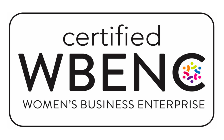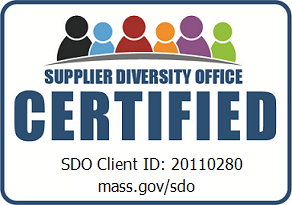We once worked with a client, the CEO of a small business (with a relatively visible brand) who was overflowing with ideas: experiential marketing, shoot-for-the-moon event concepts, complex CSR programs that addressed intractable societal issues.
Creativity is the lifeblood of marketing. It’s how we engage customers and build brands. All of these things were potentially exciting and definitely aligned with the brand, one that included CSR in its DNA.
But as a small business – with little internal infrastructure and very limited marketing budgets – the organization was always scrambling to get the basics done. And if you can’t get those done, you can’t do the other stuff. The big ideas will never come to fruition – and they will sap the time, energy, focus and resources of your team away from the essentials.
After working with this client for a while, I developed my mantra for what really mattered for them: “Make the widgets. Sell the widgets.”
As a baseline, this is what all SMBs (small- to medium-sized businesses) need to do.
In today’s digital world, it never really seems that simple, but it’s easy to identify the five key components SMBs need to focus on for their own marketing success.
Messaging
Defining your company, its offerings and its brand should be at the core of all of the other marketing activities you undertake. Developing focused, succinct messages about your products or services and value proposition (e.g., customer service, selection, convenience), will allow you to develop website copy, sales materials and a social presence that supports your messaging and makes it easy for customers to understand.
- What do we do?
- What do we offer?
- How are we better/different than our competitors?
- Why do we do it?
- Who are we as a company?
Holding a company brainstorm (perhaps limited to a select few team members from different departments) and/or inviting in trusted advisors will help in offering different perspectives and fresh thinking.
Digital presence
Once you have your messaging nailed down, you need to get your website right. It’s your digital home, the place that all other traffic – whether it’s a Google search, backlink or your social channels – will ultimately lead searchers.
Ask yourself:
- Is it up to date? Does it reflect your current product offering, messaging, team, branding, etc.?
- Is it easy to navigate? Can people find your most important information quickly and efficiently?
- Can prospects find out how to contact you?
- Are your social channels linked to the site?
Once you assess this, get the help you need – whether internal or external resources, an independent consultant or an agency – to get the site in shape.
It’s important to remember that this isn’t a “one and done” activity. Your website needs care and feeding to remain relevant.
Also critical – and I cannot emphasize this enough – is that the site and its content supports your SEO (search engine optimization). With content that supports your key product and service offerings (example: “iPhone accessories,” “Boston accounting firm”), your company, with a dedicated focus on improving SEO, will rise in its rankings, reaching more targeted customers and generating sales leads.
You also need to align your social channels around your website branding and language. And don’t forget to claim your Google business page, updating that information and link to your site.
Identifying key calendar opportunities
You must identify the key time periods that count the most for your business. If you are a real estate firm that relies on the spring/summer home buying season or a retailer that counts on a sales surge from holiday shopping, you need to create a plan to maximize your opportunities.

Ask yourself:
- What are my critical sales periods?
- When do I need to start planning for them?
- What are the tools I can use to reach potential customers?
- Are there other time periods that could use a boost in sales?
- How can I accomplish that?
Integration
Think of integration as conducting an orchestra – each instrument needs to play the right part at the right time to achieve success. Think of social media, advertising (on- and offline), events, promotions, email marketing, signage – any and all avenues through which you can reach customers and drive sales.
Ask yourself:
- What are the tools I can use to reach potential customers?
- What has worked well in the past? What hasn’t?
- What do my competitors do that is effective?
- How can we effectively execute marketing initiatives that work with our team capacity and budget?
- How can we create and execute a realistic plan to achieve our goals?
Evaluation
With the availability of tools – social insights, Google analytics – it’s easier than ever to measure the success of your marketing efforts. Don’t forget anecdotal feedback (like customer comments) and the importance of asking new customers how they learned about you in assessing your marketing program.
Once you’ve figured out what worked – and what didn’t – you can adjust accordingly.
- Did we get a bump in sales? On what products and services?
- Did our website traffic go up? What was driving it?
- Have we gained more social media followers? Are we getting more engagement on our posts?
- What is behind our success?
- What can we do better? Is there anything we should drop or add to the mix?
By focusing on marketing in a practical way, SMBs can begin to move the needle and set the stage for growth. Before you know it, you’ll be ready for those big ideas.


















